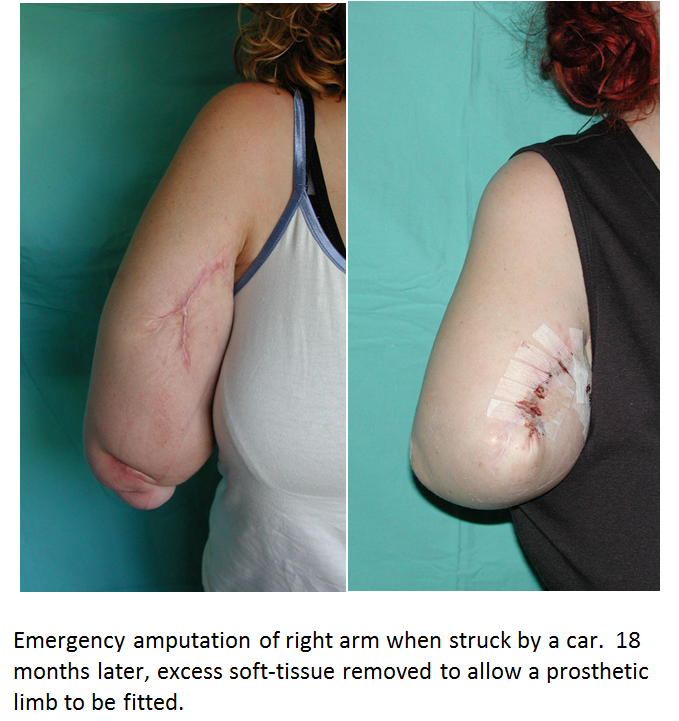Excess Soft Tissue
Get in touch
The presence of excessive amounts of soft-tissue on the residual limb can cause significant difficulties with fitting of a prosthesis. A standard, socket-fitted prosthesis relies on the presence of a stable soft-tissue envelope around the residual bone which does not wobble when the patient moves. If there is an excess of soft-tissue or if the soft-tissue envelope moves excessively, then it is impossible for the prosthetist to create a socket which can faithfully transmit the forces from the residual limb to the prosthesis.
There are many reasons why there may be excessive amounts of soft-tissue on the residual limb:
- When an amputation is performed as an emergency, the surgeon may not be able to think much further ahead than to get the wound closed so that it can heal. However, once the acute event is over, and any soft-tissue swelling disappears, it may then become apparent that there are copious quantities of loose and unstable soft-tissue on the residual limb.
- Patients may lose weight after the initial injury. If so, that weight is lost everywhere, including the residual limb, resulting in excess amounts of loose skin.
- The muscles of the residual limb often undergo disuse atrophy. Although the skin envelope usually shrinks to accommodate the loss of muscle volume, this does not always happen.
Procedure
Surgery involves excising the soft-tissue excess while trying to ensure that any scars are placed well away from any of the weight bearing parts of the residual limb.
The aim is to create a soft-tissue envelope around the residual bone that is firm, well-formed and therefore able to move in concert with the socket.

Pre and Post-op Management
Anaesthetic: Patients undergoing this type of surgery usually require a regional block (e.g. axillary or spinal anaesthetic) or a general anaesthetic. You can discuss your specific requirements with our anaesthetists before surgery.
Length of stay: Depending on the amount of tissue that needs to be excised, you may be able to have your surgery as a daycase procedure or have an overnight stay before going home.
Pain control: Pain levels after surgery vary from one individual to the next. In general, pain levels after this type of surgery are usually relatively low and can be managed with simple opiates (e.g. codeine or tramadol) taken orally for a few days. Discuss your specific requirements with your anaesthetist before discharge.
Wound Care: Wound care after this type of surgery is usually simple. You can shower immediately but not soak your wounds in a bath for 2 -3 weeks. Running water is fine. If you do shower, your dressings will get wet and will probably come off. Do not worry. We will supply you with adhesive dressings to replace them. Pat your wounds dry with clean tissue paper and leave your wound exposed to the air for 15-30 minutes. Then, apply a new adhesive dressing.
Rehabilitation: Although you do not need any specific rehabilitation exercises after this type of soft-tissue surgery, the shape of your residual limb will of course change, both temporarily and in the long-term. It is likely that you will be unable to use your standard socket immediately after surgery both to avoid problems with your new wound and because your residual limb will be swollen. Once your wounds have healed and any swelling has settled, you will need to have a new socket fitted to your residual limb.
